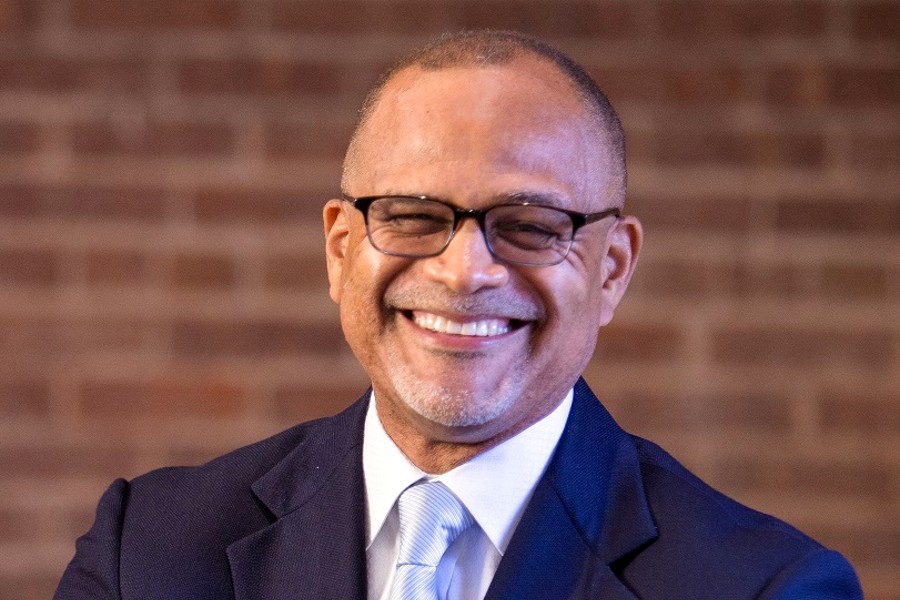
By Rhett Buttle
The U.S. Department of the Treasury expects Opportunity Zones to unlock well over $100 billion in private investment in low-wealth communities from Harlem to Hollywood. The tax incentive, which became law as part of the 2017 Tax Cuts and Jobs Act, seeks to encourage patient capital investments in more than eighty-seven hundred designated census tracts across the country by permitting investors to reinvest capital gains in designated census tracts in exchange for tax benefits.
Opportunity Zones represent the first time federal tax policy has sought to tap unrealized capital gains to advance economic and community development.
Opportunity Zones represent the first time federal tax policy has sought to tap unrealized capital gains to advance economic and community development. Proponents believe the incentive will help transform low-wealth communities, while skeptics have doubts that funds will flow to the people and places most in need — and, even if they do, that the ensuing transformation will have a positive impact on longtime residents and small businesses.
Against this backdrop, philanthropy should step up and help shape the Opportunity Zone landscape so that the benefits of the legislation also accrue to longtime residents and businesses.
Here are six ways philanthropy can help:
1. Shape the rules of the game. Philanthropy can influence IRS guidelines for Opportunity Zones — and, if necessary, follow-on legislation — to ensure that the incentive is implemented in a manner that reflects the interests of communities and the intent of the program. For some foundations, this may include support for developing and tracking metrics, stakeholder interviews to uncover opportunities and issues, and/or deep-dive case studies of specific transactions. The data from these activities can then be used to generate valuable tweaks to the design of the program. As always, data-driven insights will be critical to making the case for modifying, fine-tuning, or extending the incentive.
There is far more that can and should be done, however, and the unique features of rural Opportunity Zones must also be accounted for so that those communities are not left behind.
2. Level the playing field. Foundations are well suited to ensure that communities are poised to attract investor interest and have a seat at the table as Opportunity Zone transactions are negotiated. Organizations such as Accelerator for America are already working with cities across the country to create investment prospectuses, while others such as the Governance Project are working with municipal leaders to develop business cases and strategies for priority projects in communities such as Louisville and San Jose. There is far more that can and should be done, however, and the unique features of rural Opportunity Zones must also be accounted for so that those communities are not left behind.
3. Incentivize investor behavior. Capital is likely to follow the path of least resistance. This does not imply that social returns cannot be integrated effectively into Opportunity Zone transactions. Rather, it is incumbent on philanthropy to help create an environment where community benefits, standardized impact reporting, and related activities become “no-brainers” for investors. The Opportunity Zones Reporting Framework, a voluntary guideline recently introduced by the U.S. Impact Investing Alliance and the Beeck Center for Social Impact and Innovation at Georgetown University, is an important initiative aimed at defining best practices for investors and fund managers looking to deploy capital in Opportunity Zones.
In addition, to support for emerging norms and guidelines, we see a few additional ways to create incentives for investors to focus on social returns. Philanthropy can partner with impact-oriented investors to demonstrate what is possible in real-world transactions. A few carefully selected and constructed demonstration deals could begin to unlock practices across similar asset classes in different places. Philanthropy could also support a high-profile annual award for the highest-impact transactions, as well as the equivalent of a “Good Housekeeping Seal of Approval” for Opportunity Zone transactions and funds.
…philanthropy can play a role in reducing risk exposure for investors so that deals with the greatest potential to drive positive change proceed.
4. Create investable opportunities. Now that the Opportunity Zone incentive exists, the challenge is to develop a robust pipeline of transactions that meet both the needs of communities and the return expectations of investors. To that end, philanthropy can help by identifying projects for investment and provide the upfront investment needed to take an idea to the project proposal stage. Once a deal has been conceptualized, philanthropy can play a role in reducing risk exposure for investors so that deals with the greatest potential to drive positive change to proceed.
In addition, because Opportunity Zones are a new tool, template agreements and other documentation needed to enable transactions do not yet exist. Philanthropy can help thereby investing in efforts to establish a collection of model agreements that could be shared across locations and projects. Such an investment would reduce transaction costs and help establish norms and expectations with respect to social impact.
..philanthropy should engage with investors and local leaders to seed and share demonstration transactions that show the way.
5. Build wealth for local residents. It’s inevitable that new investment dollars will change Opportunity Zone neighborhoods. As such, it’s important to minimize displacement risks and create upside for residents, including small business owners, by better meeting their current needs and creating mechanisms for wealth creation throughout the process, including at exit. This could include clauses that commit project sponsors to hiring from within the community, financial upside for local organizations, and/or clauses for business owners to buy back their equity at a pre-agreed price. To do this effectively, philanthropy should engage with investors and local leaders to seed and share demonstration transactions that show the way.
These activities might include seeding “open-source” solutions, sharing learnings across stakeholder groups, and promoting coordination among leading actors across the country. While informal coordination and information sharing happen today, thoughtful investments by philanthropy could truly super-charge impact.
6. Accelerate progress via coordination and knowledge sharing. Ultimately, the strength of the Opportunity Zone program is that it is inherently local. While each of the designated census tracts is unique, there are common challenges and patterns across designated zones. Philanthropy can help accelerate results and improve the allocation of scarce resources by supporting coordination and communication within and across markets. These activities might include seeding “open-source” solutions, sharing learnings across stakeholder groups, and promoting coordination among leading actors across the country. While informal coordination and information sharing happen today, thoughtful investments by philanthropy could truly super-charge impact.
…now is the time for philanthropy to step up and demonstrate how this new source of private capital can shape the evolving market landscape and positively impact communities in need of a boost.
It seems as though Opportunity Zones have captivated all of us working to build more equitable communities and a more inclusive economy for all Americans. Though the debate about the incentive’s long-term impact will continue, the reality is that Opportunity Zones are here to stay. Whether you are an optimist or skeptic, now is the time for philanthropy to step up and demonstrate how this new source of private capital can shape the evolving market landscape and positively impact communities in need of a boost reported by Philanthropy Digest.
Editor’s Note: With leadership, coordination and empowerment Opportunity Zones (like Empowerment Zones) engaged in communities like Harlem and Uptown could be an answer to unemployment, small business growth and more.
Become a Harlem Insider!
By submitting this form, you are consenting to receive marketing emails from: Harlem World Magazine, 2521 1/2 west 42nd street, Los Angeles, CA, 90008, https://www.harlemworldmagazine.com. You can revoke your consent to receive emails at any time by using the SafeUnsubscribe® link, found at the bottom of every email. Emails are serviced by Constant Contact








